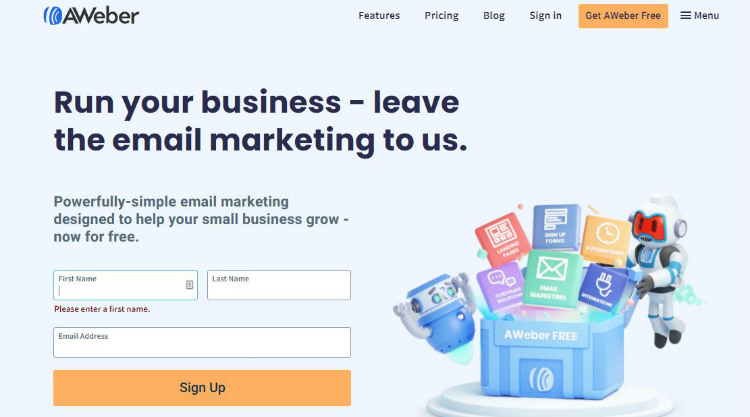An email newsletter is a vital tool for growing a graphic design business. it’s one among the foremost effective ways to spread word-of-mouth on what style of work you’re doing and searching for. Here’s what it takes to form and maintain one.

You’re visiting send a newsletter, you would like people to send it to. whether or not you’re just starting out, chances are high that you have already got a tiny low group which will be the makings of a listing. you must include:
● Clients
● Family
● Friends
● Current and past co-workers
● Other graphic designers (and illustrators, photographers, etc)
● Classmates
Unless someone asks to be removed it’s an honest idea to incorporate every email address you’ve got, as you never know who will get you your next job.
Steps to Finding Your Newsletter’s Voice
When you have a conversation with a person’s being (as against having a conversation with a cat, which if you’ve ever owned one, you recognize how well that goes) you get a way of that person’s personality. the garments they wear, their tone of voice, how they move, the words they use – all of this offers you insight into who the person is.

Every website visit could be a conversation. consider it. the net is an interactive medium. whenever you click you ask a matter. You interact with the corporate or brand. What quiet answers are you getting? does one get away with whom you’re talking to? does one have any sense of who the company/brand is?
I’m hearing a powerful answer of, “Not most.”
Your design, images, and duplicates all combine to convey your company or brand’s personality. Of all of those, I might argue that replication is probably the foremost important element for conveying your Newsletter’s personality or voice. As a copywriter, there is two stuff you must do:
1 – Have a transparent understanding of your personality, brand, or voice
2 – Convey that personality, brand, or voice to your audience
Here are suggestions for the way to accomplish this.
Step One: a way to Clarify Your Company’s Personality, Brand, or Voice
● If your company/brand were someone, who would it not be? A helpful friendly customer service rep? a fan who shares something in common with you? a fan from work who’s engaged on an identical project with you? (thanks to Bill DeRouchey for these suggestions)

● Get consensus on your company’s personality type. Yes, companies, besides people have personality types. Is your company competitive, methodical, humanistic, or spontaneous? If a corporation includes a strong visible leader, sometimes it takes on its leader’s personality type. If a corporation encompasses a strong brand or values, which will also influence the personality type.
● Get consensus on three adjectives that describe your company or brand: loyal, fun-loving, friendly, trustworthy, playful, reliable, formal, informal, irreverent, gutsy, etc.
● Determine how your brand/personality is different from the competition.
Examples
TD Waterhouse: serious and simple
Etrade: fun and exciting
Cadillac: In your face
Volkswagen: quirky and real
Step Two: the way to Convey that Voice in Your Copy
● Carefully consider the alternatives you create from the angle of your copy. In presenting your content, you basically have seven copy perspective choices. Not all of those perspectives apply to everyone, but four of them can influence how you define your personality and voice:
● Intellect versus Emotion. Will your personality appeal on an intellectual level or an emotional level?
● Style versus Substance. Will your personality specialize in style or is it grounded in substance?
● Active versus Passive. Will you communicate your personality using active or passive verb constructions? The active construction focuses attention on the doer; it communicates clarity and trust. The passive construction focuses on what’s being done; it isn’t always clear who is doing it. The voice can bump into as pompous and unreliable.
● Me versus You versus Them. Will you couch your relationship in terms of “I”, “you”, “we” or the person “XYZ company”? The person is way more formal and distant. “you” and “we” are more personal. “I’ is that the most personal, but take care – it must be clear who is speaking. If it’s the corporate founder, ensure you’re clear along with your attributions.
● Be consistent across all mediums, from your website to your emails, to your error messages. If you’re going for friendly and private, and your error message says “that subscriber account is invalid”, you’ve just blown it. “we’re sorry we didn’t understand you. Could you are trying entering your account number again?” would work far better.
● Avoid techno-speak. Yes, a number of you’ve got very technical products. you’ll be able to still use industry terms without sounding like an automaton.
● Use the verbiage your customers use. Mine your live chat logs, emails, customer service calls, in-site search, and particularly customer product reviews if you have got them. See what words your customers use to explain their problems, needs, solutions, and therefore the product benefits they find most helpful. The quickest thanks to building rapport along with your customers are to create them feel you’re like them. Use their language, and that they will instantly feel understood and connected.
Examples
Product description: the massive 440cc titanium head on the R580XD Driver boasts an outsized sweet spot and large moment of inertia (MOI) for greater forgiveness on mis-hits.
Customer language: This driver is that the best driver I’ve got ever used. My balls want to slice and everyone other varieties of freaky stuff. But now that I’ve got my new Taylor Made Driver I’ve got been hitting fairways and getting an additional 20 yards on all of my drives.
Example – Formal vs. Conversational
“if you need assistance” vs. “if you would like help”
“Please submit your comments” vs. “what’s up”
“We’re somebody’s capital management firm specializing engaged industry solutions” vs. “We can facilitate your find the proper people for your employment staffing needs.”
Format the Content
How you format the content (the way it is displayed to your audience) may again be determined by what system you are using to send your newsletter. If you know some HTML and want to format your newsletter that way, most email programs will support that, but be sure to test your mailing first to several contacts on different mail services. You may even use HTML to include some images directly in the email, but again, this should be tested.
The more complicated your design gets the more issues that can arise as you view your newsletter in different software programs and websites. If you wish to keep it simple, using formatting such as all caps for titles to break up your content. Regardless of the method, it’s important that the newsletter is easy to scan and read.
Send It!
Now that you have created and formatted your content, it’s time to send your newsletter to your contact list. Be sure to test it out first (to yourself and a few others), and once you are confident that it will display correctly in a variety of email platforms, hit that send button!

There are software packages and online services that make the entire process easier if you wish to invest some money in your newsletter. MaxBulk Mailer is a Mac software package that helps you organize contact lists and send HTML formatted emails. Emma is an online service that offers design templates and detailed statistics to track who is receiving, opening, and clicking the links in your newsletter. These are just a couple of the many options.
The last decision is to determine how often to send your newsletter. Mailing it out quarterly will keep you fresh in people’s minds without getting annoying. Any less than that and you risk someone not thinking of you when they are asked if they know a designer. If you find yourself with a lot of work, consider sending it out more often, though more than once a month is probably too much. No matter how often you send it, mailing a newsletter consistently is a great way to get more work and keep your contacts up-to-date on your design business.
Important Things to Consider When Completely Changing or Refining Your Newsletter Strategy
1. Use an email newsletter service that integrates with your analytics, and gives you tracking capabilities. In order to know how to change and improve your newsletter strategy, you need the data to drive the insights. Another great feature to look for is the ability to easily set up an auto-responder or sequence.
2. Your newsletter must present content that appeals to your readers and will make them come back for more, so learn as much as you can about what motivates them. Ask yourself these three questions; 1) Who is reading your newsletters? 2) What action do you want them to take? (ie; do you want them to buy products/services?) 3) What will drive them to take that action?
The only way you can drive your readers to take the action you want them to take is to give them the information they are searching for. The last thing you want to do is offer a sales copy. That’s a sure way to lose readers. You want to offer valuable information that the reader is interested in. Better understand what motivations are driving them to read. What are they trying to learn? Do this exercise to create personas to help answer those questions. Then start creating organized campaigns and themes that help those specific visitors get what they want, and help them look forward to getting more. This leads to #3…
3. In order to create readership and interest, you need to give the reader something to look forward to. Create a system or strategy that connects your emails from week to week. In other words, each email should NOT have its own individual identity. Connect topics or themes, and help the visitor create an interest in what is coming next.
4. When someone signs up and confirms their subscription by clicking a link in a confirmation email they are sent (double opt-in is required by the law), send out a welcome email. It’s all about making the reader feel good about subscribing. Become the reader’s friend with an approachable tone. Give them a quick and casual intro to the site, introduce yourself and show them around. Help them dig into some existing archives of main topics they may be interested in. Give the reader an opportunity to interact right away. Don’t wait until the next newsletter comes out to start creating the long-term relationship with the reader, start as soon as they sign up!
5. Don’t let the visitor forget about the past. Integrate topics and useful content that you previously wrote about that may interest the reader. This helps you to resurrect old content that has been lost in archives of information and is no longer getting a lot of traffic. Don’t let this content die… bring it back if it is helpful to your readers. You can bring it back by completely rewriting a campaign of emails based on an archived theme or topic, or you can simply integrate effective links where applicable. Getting the reader to click and interact with your site should be one of your goals in this process. By offering links to archived articles, quizzes, and free resources, you’re creating this interactive experience.
6. Make the newsletter viral. Give the readers easy opportunities to share with friends and/or family.
7. Last but not least, at the very end of the article you should provide a brief but concise description of who you are, what you offer that is unique and different, as well as the link back to your website and contact information. You always want to keep your door wide open and let the visitor walk-in…. without having to push her through the doorway!
Final Suggestion
Every website visit is a conversation. Every click is a question. Are you answering your customers’ questions? If they click on a link, does it take them to a page that answers that question? If they click on a link that says “we’re the right solution for you” – does it take them to a page that clearly spells out what their situation is and how you can help? Or are they simply taken to a list of products or services?
Are you talking about what they care about or what you care about? Are you answering their questions or just spouting off your product features? Remember, no one wants to hang out at a party with someone who only talks about themselves. Creating voice is all about building a relationship with your customers. Talk to them about what they care about using their language. Otherwise, you risk the same response I got from the cat:
“Talk to the tail…“
About the Author
Nicholas H. Parker is a content editor at the service where you can buy essay. He used to manage the content team at the company he worked for. Currently, Nicholas writes articles to share his knowledge with others and obtain new skills. Besides, he is highly interested in the web design sphere.


